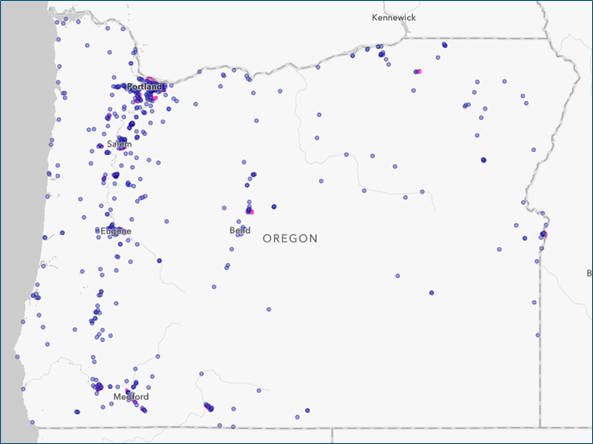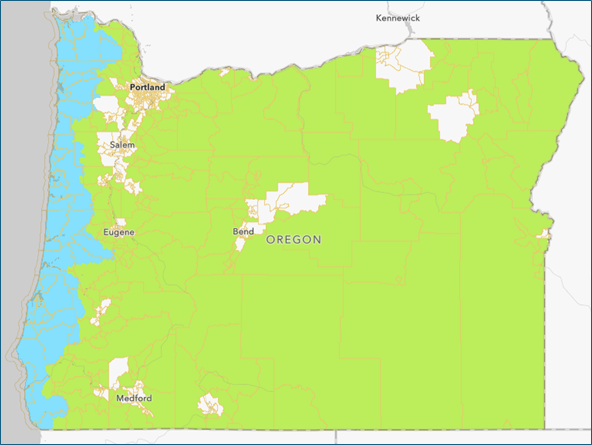Maps for the Community Green Infrastructure Grant Program
The maps on this page are related to the directive from the legislature that the Community Green Infrastructure Program (CGI) spend 40 percent of its funds in green infrastructure improvement zones and 30 percent of its funds in tribal, rural, remote, or coastal communities. These maps identify those areas.
Projects are not required be in any of the areas designated on these maps – projects that are outside these areas are still eligible for funding. The purpose of these maps is to help CGI staff ensure that sufficient program funds are spent in the areas directed by the legislature.
Green Infrastructure Improvement Zones Map
Green Infrastructure Improvement Zones are made up of two parts.
- Pink polygons: All census tracts in Oregon that have both a high level of poverty — as established by the federal government's Climate and Economic Justice Screening Tool — and a “nature adequate" or lower score according to NatureQuant, a research and technology company that uses factors such as tree canopy, land cover, and park data to generate its scores; and
- Purple points: The campuses of all Title I-A schools, which are schools that have a student body with a high level of poverty.

Click map image to access an interactive map.
CGI Coastal, Rural, Remote Areas Map
This map shows the areas that are designated as coastal, rural, or remote and will be used to meet the legislature's directive that 30 percent of CGI funds be allocated to tribal, rural, remote, or coastal communities. Tribal areas are not mapped because each tribe will confirm whether a project is on its reservation or trust land.
The areas were mapped as follows:
- Coastal areas Oregon's official coastal zone definition, established by the Oregon Legislature in 1971.
- Rural and remote areas, which are defined primarily by their low population and distance from urban-level amenities and services, are all census tracts that are neither coastal nor part of a metropolitan or micropolitan area. Metropolitan and micropolitan areas were identified by using USDA rural-urban commuting area codes, which classify U.S. Census Bureau tracts based on population, urbanization, and daily commuting.

Click map image to access an interactive map.